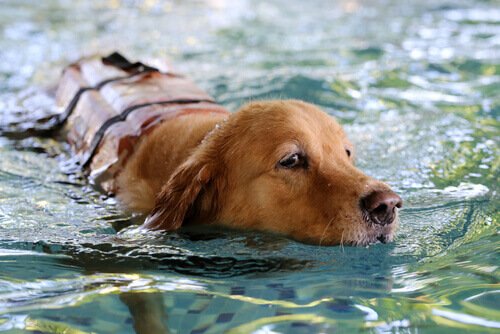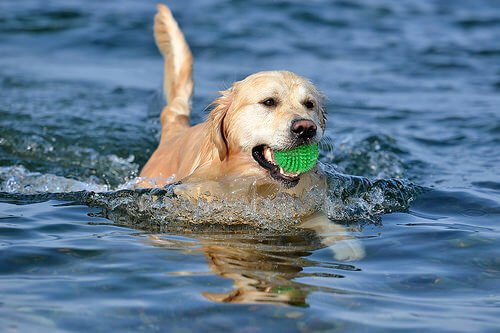Water hazards for dogs
As the heat arrives, many dogs - and some cats - will enjoy swimming to cool off. While a dip in a pond may seem harmless, there are many hidden aquatic hazards your pet might encounter . We talk about some of the aquatic hazards for dogs and how to detect if your pet has been affected ..
Waterborne diseases
There are several organisms present, particularly in stagnant or swampy water, which can cause harm to your pet or even yourself . Most waterborne diseases cause diarrhea, which in itself is treatable, but needs further investigation, since different parasitic infestations require quite different treatment.
Unfortunately, there is no single approach for all. If your pet swims in standing water (a pond or lake), there is a risk of getting a parasite , many of which are transmitted by ingestion or contact with the skin. Some of these infections are zoonotic, which means they can also be transmitted to humans.
In general, these diseases do not endanger life as long as they are detected and treated in a timely manner . But in young or immunocompromised pets can be much more serious. This is especially true in the case of leptospirosis, which can spread to the liver.

Unless you prevent your pet from swimming completely, it is difficult to avoid contracting one of these diseases . However, ideally avoid calm waters and favor slow-moving rivers or streams, since infections are less likely to persist in flowing water.
Also, try to make sure that you always have water on hand for your pet to drink, so you do not feel the need to drink from stagnant pools. Practice good basic hygiene and, if your pet shows symptoms, seek the advice of a veterinarian and remember to indicate that your pet has been swimming.
Aquatic animals
It may seem a bit dramatic suggest that your pet might be threatened by fish , but you would be surprised at how real this statement is. The risk can be very large and could be a trance for small dogs or puppies. There have also been cases of river rats attacking dogs. Be vigilant.
Aquatic hazards: strong currents
While rivers, streams and seas have the advantage of being clearer to parasites, running water can be deceptive and rapid. A look at the surface of the water could indicate that the current is softer than it really is. Be sure to keep your pet from swimming in rivers that are very full , for example, after heavy rains, and keep it away from the sea if there are current hangover alerts.
Aquatic hazards : unusual objects
The old routine of fishermen's comedy that take water boots has some basis in fact. Nature groups often warn about the increasing levels of garbage and debris that accumulate in our waterways, with various objects reaching the water.

Cans, bottles, stones and other sharp objects could cut your pet while swimming , and the rods or ropes could get tangled. To avoid this, keep it out of muddy, dark or contaminated water.While many dogs will approach an activity with enthusiasm, it could be fatal if they swim farther than they are able to swim back.
Do not let your dog swim too far from the shore and watch to make sure you're not too tired to avoid water hazards. Swimming is an excellent physical activity that can help your pet stay cool and perform a slightly different form of exercise. Meanwhile, be cautious and sensible: you and your pet must have fun and stay safe in the water.


